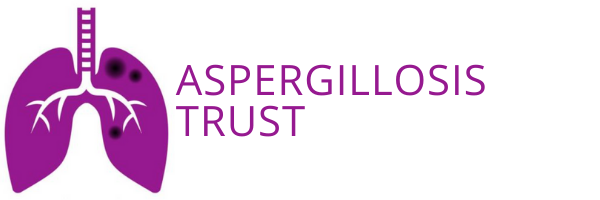Sandra Hick’s Story - Road to the Correct Diagnosis
It took about two years to finally be diagnosed with allergic bronchopulmonary aspergillosis (ABPA) in October 2008. In that time initially in the Autumn of 2006, I had a chest/lung infection about once a month, every month. These would take several weeks to recover from. Each time I went to the GP, I was given amoxicillin, a broad spectrum antibiotic, with no sputum tests taken and cultured. So treatment was empirical (or blind) as the infecting microbe was unknown. That went on for about 6 months and I was told by the GP, ‘some patients with asthma just do get lots of infections’. It’s important to raise awareness so that frontline staff such as GPs and asthma nurses think of fungal infections sooner, if repeated courses of antibiotics aren’t helping. This will also help to limit unnecessary exposure to antibiotics and help to reduce Antimicrobial Resistance (AMR).
Also in early Summer 2008, I contacted the GP whilst having a severe asthma attack and needed to be given nebulised salbutamol. I didn’t have a nebuliser at home at that stage. ABPA often presents as uncontrolled asthma, so it is ‘hidden’ or ‘masked’ which is why it isn’t picked up. GPs and asthma nurses can assume that patients aren’t using their inhalers regularly or correctly, when this isn’t the case.
It isn’t just people with asthma that can be affected by aspergillosis, but those with cystic fibrosis, bronchiectasis, COPD, or TB. Also people with Primary Immunodeficiency Syndromes (as in my case), or those on immunosuppressive therapy for organ transplants, or those on cancer chemotherapy or people with HIV/AIDS.
I had a quiet spell with the good weather, as ABPA can calm down when it’s warm and dry. No further investigations were made, until I needed an x-ray for what seemed like another bad chest infection in October 2008. I had sharp pains when breathing in, which were in the middle of my chest. Instead of another infection, my lung had collapsed! It was the left upper lobe that had collapsed, due to a mucous plug.
That was how the diagnosis of ABPA was eventually made, as aspergillosis causes hard, mucous plugs to form, which obstruct the airways. Choking-coughing fits, from trying to remove these plugs are a feature of ABPA and are exhausting. The treatment for the collapsed lung was prednisolone (steroid tablets) for two weeks, which allowed the airway to widen and for the plug to be coughed-up. The ABPA did cause permanent damage in the form of bronchiectasis (widening of the airway from mucous plugs and scarring). That meant damage to the cilia (tiny hairs) that line the airway and help to remove mucous. So it is harder to clear mucous in bronchiectasis and that creates a breeding ground for further microbes, causing infections and a vicious circle.
Things have progressed from ABPA unfortunately, as I now have lung cavities infected with azole-resistant Aspergillus.

